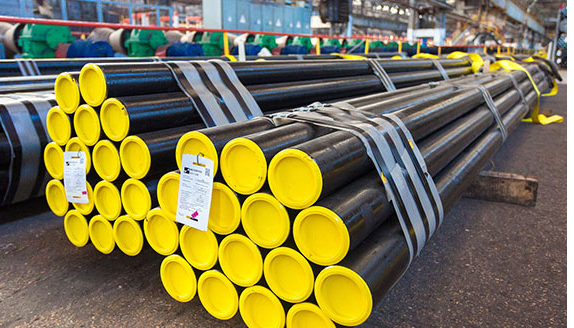Line pipe manufacturers have become an integral component of the railway industry. The industry may use the pipes to transport various fluids and gases in locomotives, rolling stock, and other railway equipment.
Looking at the past few years, you will notice that the use of seamless rail tubes and pipes has increased. The reason behind the growth in use is their robustness, durability, and ability to withstand high pressure and temperature. Let us understand what seamless pipes are and their advantages in the railway industry.
What are seamless tubes and pipes?
Steel pipe fabricators produce seamless tubes from solid cylindrical billets. They heat and then roll the billet to form a tube without seams. The seamless pipe manufacturing process involves using high-quality steel. Pipe producers heat the steel billet to a high temperature and then pierce it to form a hollow. The absence of seams in the pipes enhances their strength and durability, making them suitable for various industries.
Now that you know what seamless tubing solutions are let us find out the primary uses of these pipes.
Aviation, automotive, railways, shipbuilding, oil & gas transferring, drilling industry, etc., use seamless pipes for various purposes.
Let us understand the advantages of seamless tubes to know why the railways choose these pipes and tubes.
Advantages of seamless pipes:
There are several advantages of using seamless tubes and pipes in the railways. Some of the benefits include:
- Strength and durability: Cold-drawn seamless tubes are more robust and durable than welded tubing solutions. The absence of seams in the pipes eliminates the typical cause for the weakness in welded pipes. Since there is no joint in the seamless tubes and pipes, it makes them more resistant to stress and corrosion. The stronger the pipes are, the longer they will last. As a result, the railways get pipes that are strong and durable.
- High pressure and temperature resistance: Seamless tubes can withstand high pressure and temperature. They are ideal for use in applications that require the transportation of fluids and gases under high pressure and temperature.
- As you know, these pipes are much stronger than welded pipes. As a result, when the railways expose carbon steel seamless pipes to high pressure, they easily survive. Similarly, the thick walls of the pipes help them to function well even when you use them in extreme temperatures.
- Lower costs: Many of you have avoided investing in seamless pipes, thinking that these pipes are costly. While seamless tubes cost more than welded tubes, they have lower maintenance costs than welded pipes. The absence of seams in the pipes eliminates the need to maintain and repair them frequently. It makes them more cost-effective in the long run.
Conclusion:
Even though many different types of piping materials are available, the railways choose seamless pipes over everything. They choose these piping solutions for producing various objects that they use in the railway industry. There are many applications of seamless pipes, from building locomotives to constructing railway tracks.
The seamless pipe manufacturing process allows manufacturers to produce strong, reliable, versatile piping solutions. They follow hot rolling and cold drawing methods to produce pipes and tubes that serve the railway industry.
These pipes and tubes are also ideal for complex applications since they do not have any welded joints or seams. Their seamlessness makes them ideal for high-pressure and temperature uses. Also, the seamlessness of these conduits makes fluids flow without any hindrance. Hence, seamless pipes are ideal for various uses in the railway industry.



